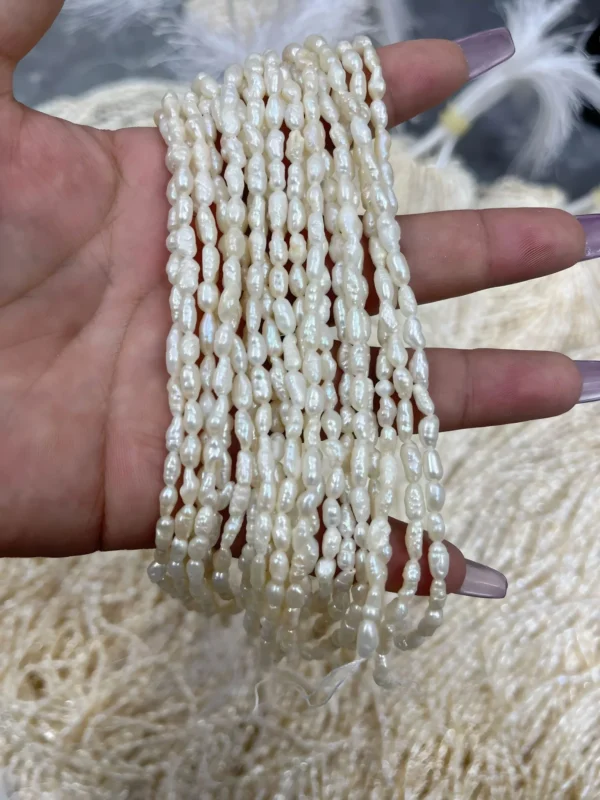The Fascinating World of Keshi Pearls: A Unique Gem

Introduction: The Enigma of Keshi Pearls
Have you ever wondered about the luminous allure of pearls and what makes some pearls more sought after than others? In the exquisite universe of luxury jewelry, Keshi pearls hold an esteemed position due to their distinct beauty and fascinating origins. These pearls stand out not just for their iridescent shimmer, but also for the unique way they come into being. Are they natural pearls, cultured pearls, or something entirely different? Let’s delve into the captivating story behind Keshi pearls and uncover the truths about these precious gems.
What Are Keshi Pearls?
Origins and Historical Importance
The term “Keshi,” originating from Japan, traditionally referred to tiny, nugget-like pearls that were a byproduct of the cultured pearl industry. In the ever-evolving pearl market, the nomenclature of Keshi pearls has been subject to a certain degree of misuse, leading to confusion. According to the International Jewellery Confederation (CIBJO), using the term “Keshi” unadorned is misleading unless prefixed with indicators such as “natural” or “cultured.”

Defining Characteristics of Keshi Pearls
Natural Versus Cultured Keshi
Natural Keshi pearls are formed without any human intervention. They arise when a mollusk rejects the implanted nucleus used in cultured pearls and instead forms a pearl solely from nacre. These pearls are incredibly lustrous due to their 100% nacre composition. On the other hand, cultured Keshi pearls, often derived from Akoya, Tahitian, or South Sea oysters, are the accidental byproducts of the pearl culturing process. They lack a nucleus but are still considered part of the cultured pearl family.
A Closer Look at the CIBJO Standards
The latest guidelines by CIBJO highlight a remarkable term for natural Keshi: “Bombay pearls” as noted by GIA. This classification emphasizes their rarity and highlights their standing in the pearl hierarchy. Cultured freshwater Keshi pearls, particularly those from the United States, have earned a specific distinction under the term “Lagniappe Keshi.” This differentiation underscores a nuanced yet significant aspect of the Keshi pearl discussion.

The Varieties of Keshi Pearls
Sea and Freshwater Origins
While Keshi pearls are predominantly associated with saltwater pearls, there’s a growing acceptance and recognition of freshwater Keshi. Whether originating from the warm waters that cultivate Akoya and Tahitian pearls or the more tranquil freshwater environments, Keshi pearls exhibit a spectacular range of hues and sizes.
The Controversy of Pearl Classification
There’s an ongoing debate about whether freshwater pearls, particularly those from China, deserve a specific Keshi-related nomenclature. Given that these pearls share the same accidental birth as their American counterparts, should they not too receive a unique recognition? However, the “Bonus Cultured Pearls” term by the CIBJO conveniently encompasses all these discussions, serving as an umbrella classification for both sea and freshwater Keshi varieties.
Wrapping Up: The Allure of Keshi Pearls
Keshi pearls stand at the intersection of natural beauty and human invention. Their formation speaks volumes to the wonders of nature’s serendipity, resulting in pearls with unmatched lustrous qualities and practical applications in luxury jewelry. Whether considering their historical roots in Japanese pearl farming, their classification challenges, or their unique status in today’s market, Keshi pearls symbolize rare beauty shrouded in mystery.
Next time you admire a piece of pearl jewelry, take a moment to appreciate whether a Keshi pearl becomes its shimmering centerpiece. These gems might be tiny treasures, but they carry a substantial legacy within them. Understanding their origins and classifications enhances not only our appreciation but also informs our choices as discerning customers in the luxury jewelry arena.
By delving into the mystique of Keshi pearls, we’ve explored an exceptional facet of the pearl industry, casting light on both historical complexities and modern luxuries. As interest in these unique pearls blossoms, their place in the realm of opulent adornments is assured for those captivated by their enduring elegance.
